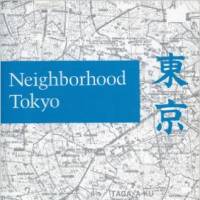"Neighborhood Tokyo" is a portrait of an average Tokyo neighborhood in Shinagawa Ward where Harvard Anthropologist Theodore Bestor did fieldwork from the late 1970s to early '80s. Though the book is a rigorous study of social life, Bestor's wit and candor open it up to general readers.
Neighborhood Tokyo, by Theodore C. Bestor
347 pages
Stanford University Press, Nonfiction.
Bestor dispels many myths about the organization of Tokyo, including those created by his fellow Japanologists. In particular, the popular notion of Tokyo as a "city of villages" draws his ire, as do claims that neighborhood social structures are feudal. This is why Bestor chose to study a recently urbanized area and trace the shifting role of its chokai (neighborhood association) from its genesis in the '20s through to the '80s. Bestor notes that chokai officials legitimize their authority with a patina of tradition — their festivals, volunteer fire patrols and even summer pesticide-spraying events have all been ritualized to some degree.
His overarching argument is that neighborhood social structures are modern developments serving contemporary needs. Though many changes in Tokyo's neighborhoods stem from larger political or economic movements, Bestor suggests that most come from local communities themselves. He exposes the personal and sometimes petty politics which lubricate the machine of social order in Tokyo, but he plainly admires communal structures and believes that they endure because they are willing to adapt.
Read archived reviews of Japanese classics at jtimes.jp/essential.

















With your current subscription plan you can comment on stories. However, before writing your first comment, please create a display name in the Profile section of your subscriber account page.